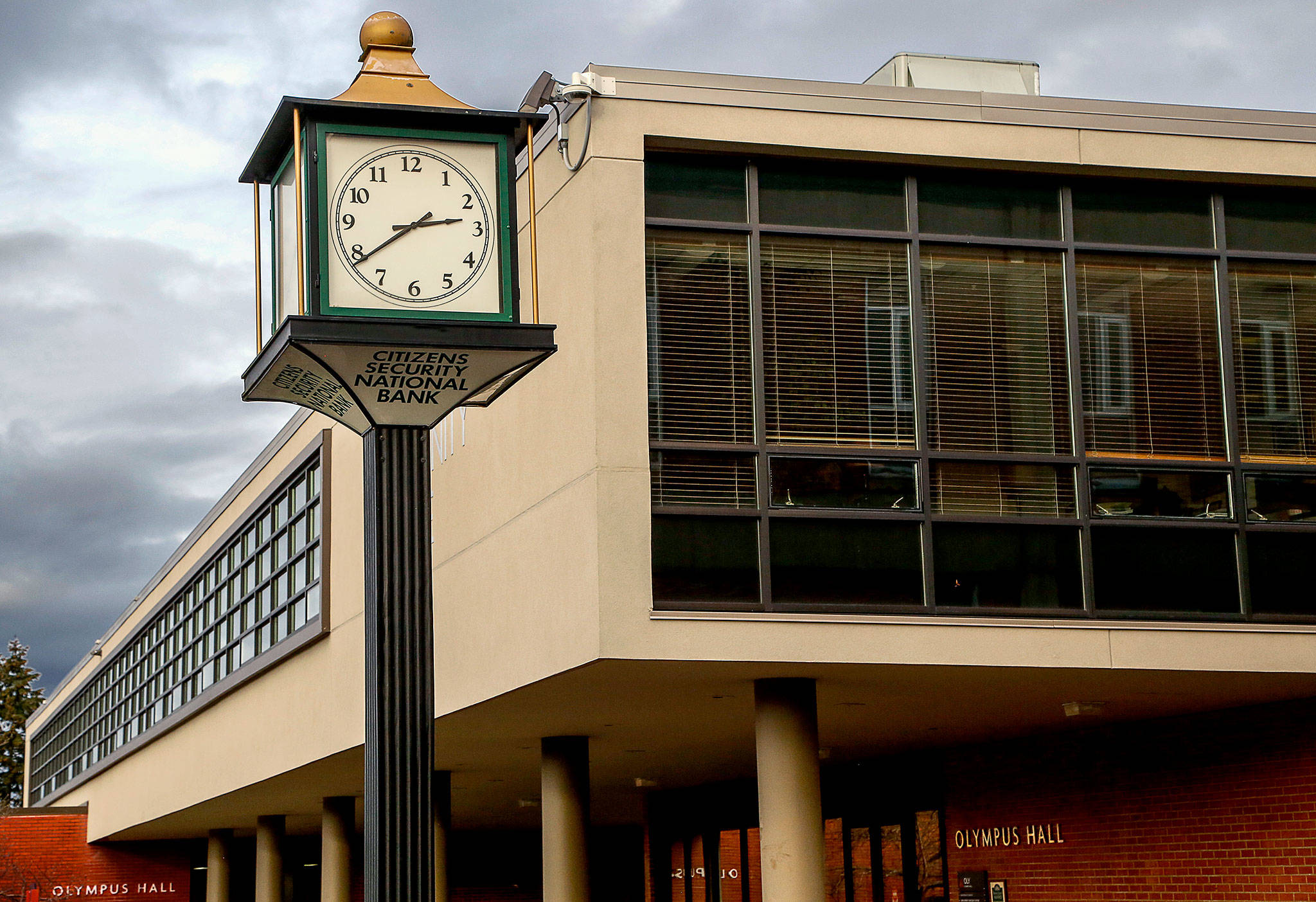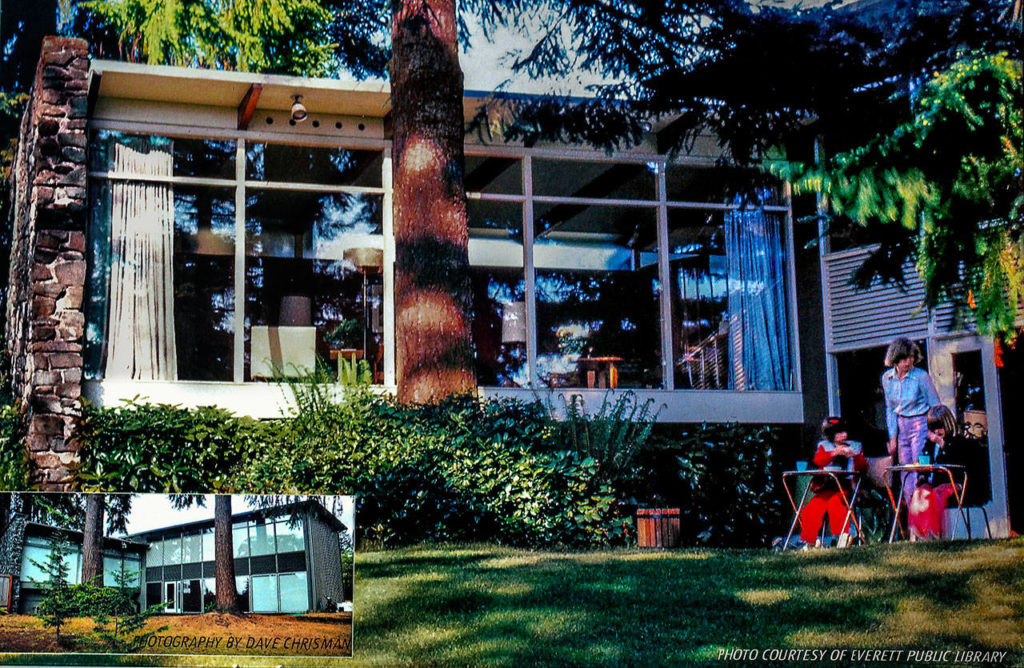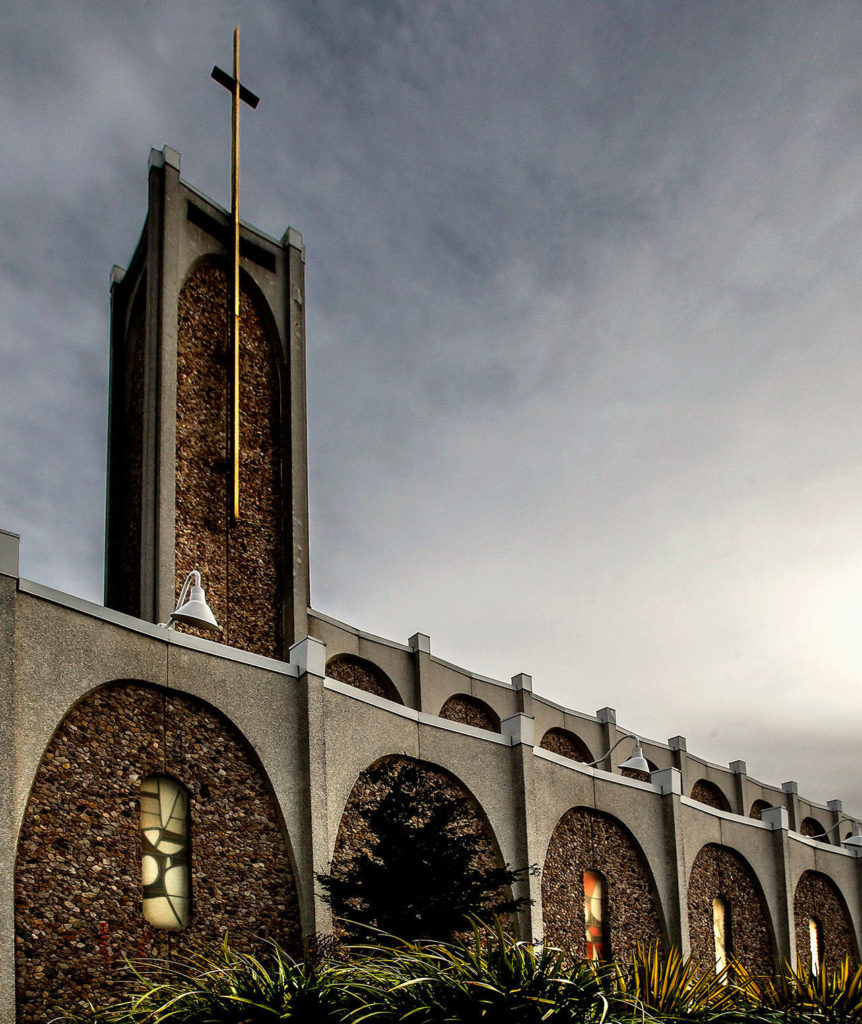A downtown bank, an Everett Community College building, a Catholic church — there are places so familiar, so seemingly ordinary, they’re nearly invisible.
“These buildings go almost unnoticed,” said Jack O’Donnell, a local historian and secretary of Historic Everett, a preservation group.
O’Donnell’s architectural preferences lie in the 1890s and 1920s, rather than halfway through the 20th century. Still, Historic Everett’s latest calendar project piqued his interest in the design style heralded as mid-century modern. The sleek, post-World War II look, a favorite decor with many millennials, is visible along the streets of Everett.
The nonprofit organization’s 2019 calendar, “Celebrating Mid-Century Modern in Everett,” is a look back at architecture of that era — which then was an imagining of the future.
What a difference a year makes. Historic Everett’s 2018 calendar was a tribute to the city’s 125th anniversary, with pictures of the earliest homes and buildings.
“I never really appreciated a lot of the architecture during that time. This is causing me to look at it more closely,” O’Donnell said of mid-century modern style. He described taking a downtown Everett walk with Dave Chrisman, president of Historic Everett, and noticing all the buildings dating to that era.
Chrisman was a major contributor to the calendar, and took a number of its photos. O’Donnell compiled short histories of the buildings.
Michael Houser, the state’s architectural historian with the Department of Archaeology and Historic Preservation, wrote the calendar’s introduction.
Mid-century modern design had its start in Europe in the 1920s, he said.
There were the clean lines of German Bauhaus and Danish Modernist styles, and the Art Deco or “moderne” movement. With flat roofs and lots of glass, the architecture “pushed the envelope of design,” Houser said.
The calendar cover is Everett’s most obvious mid-century showpiece, the Cope Gillette Theater in the arts plaza at California Street and Wetmore Avenue. Opened in 1963 as the Bank of Everett, it was designed by architect John Bryant of Bryant, Butterfield and Frets. An example of New Formalism, it has arched ceilings supported by slender columns and gold-colored Italian glass.
It was a KeyBank before housing the Village Theatre’s Kidstage program. Last year, it became the youngest building on the Everett Register of Historic Places.
For years the city’s tallest building, the Seattle First National Bank at 1604 Hewitt Ave. “follows the modernist concept of form follows function,” according to the calendar. It was front-page news in The Everett Herald when construction of what’s now a Bank of America, designed by architects Harold Hall and David Dykeman, was announced in 1964.
North of downtown, on the Everett Community College campus, is Olympus Hall. The calendar describes it as “a textbook example of the International Style,” with a lack of ornamentation. What was once Everett Junior College opened on the site in 1958. Buildings were designed by Harold Hall and associates Arthur Graves and David Dykeman Jr.
The calendar also features churches, among them Immaculate Conception at 2501 Hoyt Ave., which opened in 1967. Designed by Harry E. Botesch & Associates, it’s constructed of precast concrete with exposed aggregate stucco.
Harold Hall had also designed his own home in Everett’s Glacier View neighborhood. His 1952 house is one of several quintessential mid-century modern homes in the calendar. In 1959, an Everett Herald writer described it as a “symphony in glass and natural stone.”
“They were kind of trailblazers,” Houser said of those who designed the new-style homes. “They’d think about the future, the latest technologies — dishwashers, lighting, things to make life easier. There was lots of discussion after the war about houses of the future.”
Some calendar pages are devoted to more mundane places, but with their shed roofs they’re mid-century modern all the same.
What was once Bing’s Drive-In, which opened at 2515 Broadway in 1957 with 21-cent burgers, is now Henry’s Donuts. North on Broadway is Ray’s Drive-In, opened in 1962 and still in business.
For May, the calendar features Everett motels along Broadway — then advertised as “Hwy. 99” — some of them long gone.
”For me it’s about educating people, getting them excited about what they have,” Houser said, adding that 50 years is generally the rule for a structure to be considered historic. It’s time for mid-century modern to have its due.
“These are just coming of age,” Houser said. “In the preservation community, it’s a hot topic.”
Julie Muhlstein: 425-339-3460; jmuhlstein@heraldnet.com.
Calendar on sale
Historic Everett’s 2019 calendar, “Celebrating Mid-Century Modern in Everett,” is available for $20 at these Everett businesses: J. Matheson Gifts, 2615 Colby Ave.; Peak Health & Fitness, 2902 Rucker Ave.; Lamoureux Real Estate, 1904 Wetmore Ave. It’s also available, using PayPal ($3.50 shipping), at: http://historiceverett.org/
Talk to us
> Give us your news tips.
> Send us a letter to the editor.
> More Herald contact information.




























